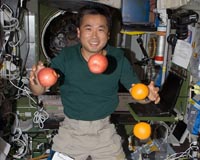 |
Sydney, Australia (SPX) Aug 11, 2009 The current Augustine Review of America's human spaceflight plans has produced a fascinating showcase of ideas. Granted, it's also quite disturbing, as a very pragmatic consensus emerges that NASA will be unable to return astronauts to the Moon in the near future. On a brighter note, we've seen some interesting mission plans and architectures that have been suggested for the time when America is finally ready to send its astronauts beyond near-Earth space. One idea that's caught a lot of attention is the Propellant Depot, a concept that has been circulated for more than three decades. Basically, a Propellant Depot is a gas station in Earth orbit. Spacecraft can be launched from Earth to the Depot, take on a fuel load, and then head further out to the Moon or elsewhere. Well-researched concepts for Propellant Depots have been generated by aerospace firms, although nothing has been formally approved for development. But the merits of the idea are sinking in, and we will probably see a Propellant Depot launched at some point in the future. Transport on Earth regularly refuels at different geographical zones, and it makes sense to do it in space. The benefits include reduced costs and weight for spacecraft, as well as new mission plans that wouldn't be feasible without them. Some Propellant Depots envisage collections of fuel tanks which would be plucked from the Depot, and slotted into a spacecraft. Others suggest large tanks that would refuel a spacecraft's fuel load through pipes. With some architectures, it's apparent that we may start to generate a reserve supply of empty tanks, which will never be used again for spacecraft refueling. There's a possible second life for these tanks. They can be converted to habitation modules. This idea is hardly new, but if we're taking another look at Propellant Depots, it's time to re-examine the "TankHab" concept. The idea is simple in theory. Just vent the excess propellant, fill the tank with cabin atmosphere, install some equipment, and move in. In practice, this will require a lot of careful planning and tricky work in space. Most propellant tanks aren't really suitable for this, as they were designed for one purpose only. A TankHab would only be practical if the tank were designed from the beginning to be retrofitted. This could involve anything from the installation of internal brackets to help secure equipment, to the use of a special hatch for ingress. A hatch could be installed with the tank's plumbing passing through its middle. At the end of the tank's use for fuel, this hatch could be removed and replaced with a conventional crew access hatch. Some tanks would not be suitable for conversion in any case. If hypergolic or other forms of toxic fuels have been used, the risks to the crew would be too great, even if the tank was baked after use. There's also the risk of metal fatigue in a tank that's been chilled by cryogenic propellants, then heated. But these can be factored into the design. The availability of TankHab modules could turn a Propellant Depot into a multipurpose space station, with crews performing scientific work, maintenance and other duties. Then again, it might be considered too risky to keep crews next to so much propellant for too long. Alternatively, TankHabs could be bolted onto spacecraft heading for deep space, providing additional crew quarters on a long journey. Your correspondent has had a lot of laughs watching "Corner Gas", an offbeat TV comedy about the operator of a petrol station in a small Canadian town. Decades from now, will another weird TV show be set around a Propellant Depot? Dr Morris Jones is an Australian space analyst and writer. His latest book, "The New Moon Race", is available from Rosenberg Publishing Share This Article With Planet Earth
Related Links the missing link Space Tourism, Space Transport and Space Exploration News
 Sushi and fresh underpants await landed astronaut
Sushi and fresh underpants await landed astronautHouston, TX (AFP) Aug 03, 2009 The shuttle Endeavour descended safely to Earth on Friday, spelling a feast of sushi and a clean pair of underpants for one Japanese crew member. Endeavour's seven member crew, including Japan's Koichi Wakata, touched down at NASA's Kennedy Space Center in Florida at 10:48 am (1448 GMT). Wakata, adjusting to Earth's gravity after more than four months of weightlessness, told reporters ... read more |
|
| The content herein, unless otherwise known to be public domain, are Copyright 1995-2009 - SpaceDaily. AFP and UPI Wire Stories are copyright Agence France-Presse and United Press International. ESA Portal Reports are copyright European Space Agency. All NASA sourced material is public domain. Additional copyrights may apply in whole or part to other bona fide parties. Advertising does not imply endorsement,agreement or approval of any opinions, statements or information provided by SpaceDaily on any Web page published or hosted by SpaceDaily. Privacy Statement |